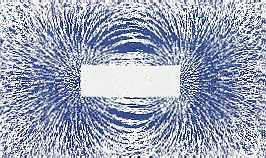
UB Scientists Find Strongest Evidence Yet That Magnetic Field May Enhance, Not Kill Superconductivity
(April 1999)
BUFFALO, N.Y. -- Magnetism destroys superconductivity. Physicists take that premise as gospel. But according to a 1986 theory initially considered outlandish, superconductivity should reappear in a material if it is oriented precisely in line with a very high magnetic field.New experiments conducted by University at Buffalo physicists have demonstrated the strongest evidence yet for this strange and extremely promising phenomenon, called reentrant superconductivity.
"If this phenomenon exists, it means the complete opposite of everything that is known about superconductivity and magnetism," said Michael Naughton, Ph.D., associate professor of physics and chemistry at UB and lead investigator. The results may constitute the best demonstration so far of an extremely rare type of interaction between electrons in a superconductor. This type of interaction, called p-wave spin, has only been seen once before in nature, and its discoverers were awarded the Nobel Prize in Physics. It has never been seen in a superconductor.
While the UB findings are fundamental, the existence of reentrant superconductivity could have dramatic practical applications, ranging from greatly improved energy storage to far more precise magnetic resonance imaging. The research is described in a paper to be published April 14 in Physical Review Letters (Vol. 78) authored by Naughton and In Jae Lee, a doctoral candidate in physics at UB and co-authored by researchers at Princeton University. The researchers caution that they do not yet have solid evidence of reentrant superconductivity.
However, according to Naughton and Lee, results with their material, a low-temperature, molecular superconductor, -- (TMTSF)2PF6 -- demonstrate several key indicators that strongly support the existence of such a phenomenon.
"We can see this interesting behavior because we worked so hard to orient the crystal in the magnetic field, according to the 1986 theory," said Naughton. "If you move it, this anomalous effect is gone."
Typically, Naughton explained, magnetic fields destroy superconductivity because the energy they generate perturbs the close interaction between pairs of electrons that is a prerequisite for superconductivity.
The most common way that a magnetic field destroys superconductivity is by disturbing the orbital effect, where the electrons in a pair orbit each other, acquiring more and more energy from the magnetic field. Once this energy becomes greater than that which unites the two electrons, the electron pairs break apart and superconductivity is suppressed.
The other way magnetic fields can destroy superconductivity is when two electrons have what is called opposite spin; this is when in addition to the two electrons orbiting one another, they also are spinning like tops but in opposite directions, called s-wave spin. When the magnetic field is turned on, one electron gains energy while the other loses it.
"If that difference is bigger than the amount of energy holding the electrons together, then they fly apart and superconductivity is gone," explained Naughton.
But when electrons exhibit the extremely rare phenomenon known as p-wave spin, where both are spinning in the same direction, the magnetic field cannot destroy superconductivity by the spin-effect. This is because while the field may change the electrons' total energy, it doesn't change the difference in energy between them.
Naughton said that the existence of p-wave spin has been proven only once, in superfluid helium; the discovery was so profound that the scientists who made it were awarded the 1996 Nobel Prize in Physics.
But if p-wave spin is truly what the UB researchers have detected, this would be the first time that p-wave spin has been found in a superconductor. "Our results may constitute the strongest evidence yet for p-wave superconductivity, short of actually proving its existence," said Naughton. In the experiments described in the paper, the UB material remains superconducting when exposed to a magnetic field of 6 Tesla (one Tesla equals 20,000 times the earth's magnetic field), which is at least three times stronger than what normally would be expected.
Naughton and his colleagues are now conducting experiments at the National High Magnetic Field Laboratory in Tallahassee in which they have extended the magnetic field up to 33 Tesla, the highest available magnetic field on earth.
A key characteristic of (TMTSF)2PF6 is that it is anisotropic -- electrons move more readily in some directions than in others -- and quasi-one-dimensional, an extreme case of anisotropy where electrons move mostly along straight lines or chains in the material's crystal structure.
The electrons in the material also show some ability to move along molecular planes in the material. This means they also may be quasi-two-dimensional. If subsequent experiments prove this, it means that the potential for reentrant superconductivity applications is even greater, since it could appear in high-temperature superconductors, which also are quasi-two-dimensional, Naughton explained.
"All superconducting magnets are limited by the maximum field at which they can function," said Naughton. "The magnetic field they generate comes back to haunt them, by destroying superconductivity."
In magnetic resonance imaging, for example, the magnets are almost exclusively superconducting magnets, but they can exist as superconductors only under a limited field.
"Our research demonstrates a way to push those fields higher and still have the materials be superconducting," said Naughton.
New materials that demonstrate this effect would allow magnetic resonance imaging to yield far more information at far higher resolution than is possible today.
Naughton said, for example, it could make possible the imaging of proteins in
the body.
In addition, in higher magnetic fields, it would be possible to dramatically
increase the amount of energy stored in a superconducting coil.
"A demonstration of reentrant superconductivity would be an important
breakthrough because it would mean that researchers could deliberately structure
materials to take advantage of this effect," Naughton said.
 BACK to the "Terminology" page at Superconductors.ORG
BACK to the "Terminology" page at Superconductors.ORG